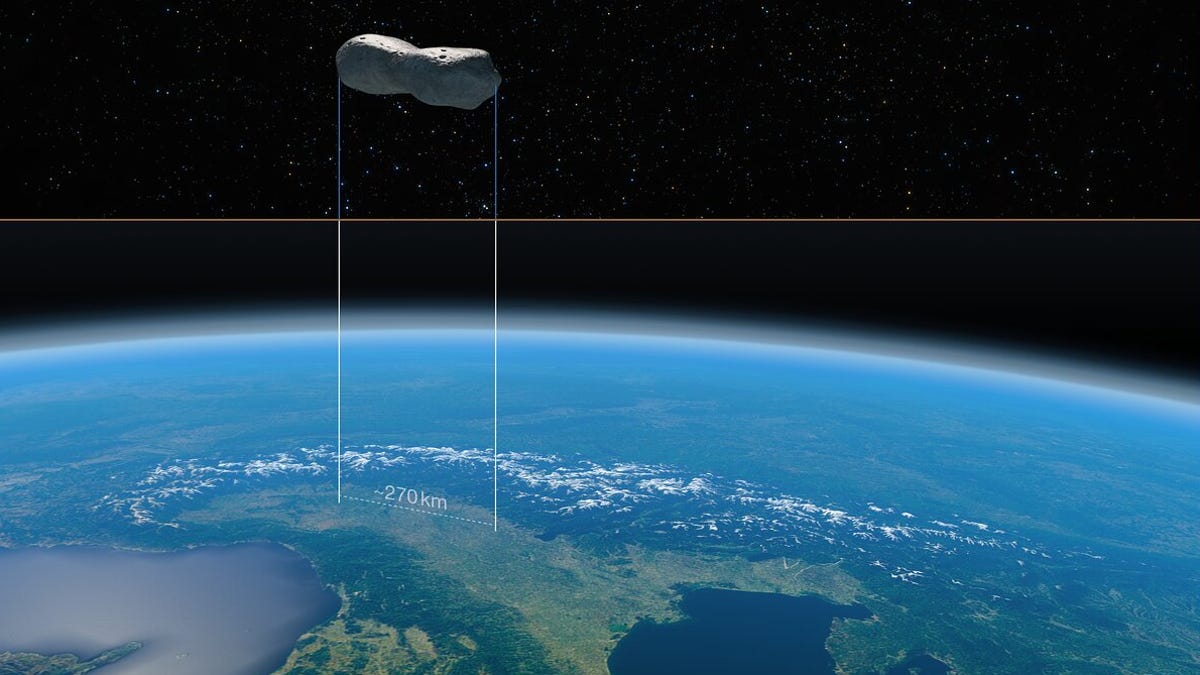Bizarre 'dog bone' asteroid is bigger than New Jersey and has two moons
The giant space rock Kleopatra is huge, but it's a surprising lightweight at the same time.

Kleopatra's size compared to that of northern Italy.
Scientists took a close look at one of the most distinctive giant asteroids around and found it to be even weirder than previously thought. Kleopatra is about 168 miles (270 kilometers) long and shaped like a dog bone or dumbbell, and it hosts two moons, named AlexHelios and CleoSelene, after the Egyptian queen's children.
"Kleopatra is truly a unique body in our solar system," SETI Institute astronomer Franck Marchis said in a statement. "Science makes a lot of progress thanks to the study of weird outliers. I think Kleopatra is one of those and understanding this complex, multiple asteroid system can help us learn more about our Solar System."
Marchis led new research into the odd shape and composition of Kleopatra, which is published Thursday in the journal Astronomy and Astrophysics.
This processed image shows AlexHelios and CleoSelene, the two moons of the asteroid Kleopatra (the central white object), which appear as two small white dots in the top-right and bottom-left corners of the picture.
A team of astronomers used the European Southern Observatory's Very Large Telescope in Chile to get a better picture of Kleopatra's unusual shape. They found that one of the space rock's lobes is larger than the other and determined its length, which is longer than the state of New Jersey, or about half the length of the English Channel.
A second study published in the same journal refined previously estimated orbits of the two moons around Kleopatra, allowing the researchers to calculate the mass of the main asteroid, which turned out to be a surprise.
Kleopatra has over a third less mass than indicated by previous estimates, a strange development considering it's thought to be metallic. All this suggests it's more a porous pile of pebbles than one big hunk of iron.
Rubble pile asteroids aren't that uncommon. There's reason to believe that Bennu, the asteroid recently visited and sampled by NASA's Osiris-Rex spacecraft, has a similar structure. Such space rocks can be formed when material from a major impact accumulates or "accretes," creating a new body. The researchers suspect that Kleopatra's moons may've also been formed through similar processes.
Up next, Marchis says he hopes to point more-powerful telescopes at Kleopatra to see if it might host more moons or other surprises.
"Kleopatra is a puzzling multiple system," the team's paper concludes. "This system certainly deserves particular attention in the future, with the Extremely Large Telescopes and possibly a dedicated space mission, to decipher its entire formation history."

